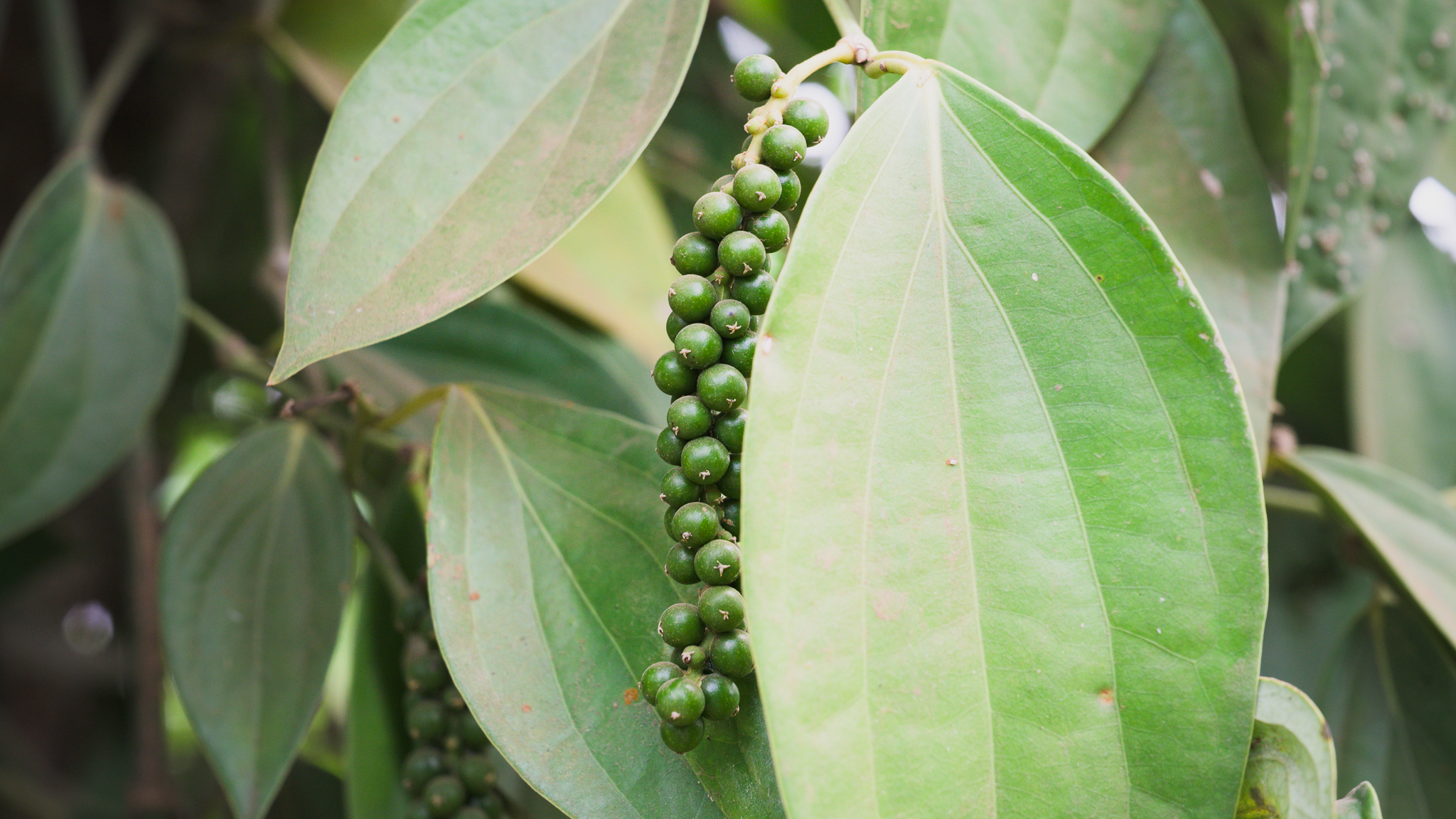
On our way to the majestic Ekom-Nkam waterfalls, we made a stop in Penja, home to one of the world’s most renowned spices: Penja pepper. Having visited the plantation before, I knew it would be a fascinating experience for my friends, not just as a detour but as an opportunity to understand the depth behind an ingredient we so often take for granted. This visit was part of a one-day trip, making it a perfect short but enriching excursion.
Penja pepper owes its distinct aroma and flavor to the unique pedo-climatic conditions of the region. Its Geographical Indication (GI) status has elevated its reputation globally, making it a staple in high-end European restaurants and beyond. Upon arriving at the plantation, we were greeted by a vast landscape divided into three main areas, each playing a crucial role in the pepper’s journey from plant to spice. The nursery, where delicate young pepper vines are carefully nurtured, represents the very beginning of this labor-intensive process. The fields, where mature vines entwine around Erythrina trees standing tall like silent guardians, showcase the harmonious relationship between nature and cultivation. Finally, the production area, with its steeping boxes and drying spaces, holds the secret behind the pepper’s final transformation, where time and technique work together to enhance its characteristic aroma and depth of flavor.
Guided by a knowledgeable technician, we walked through the plantation, learning about the intricacies of its cultivation. To my surprise, much of the process remains manual and traditional, with minimal mechanization. The farmers rely on their expertise and the region’s natural advantages to produce organic, chemical-free pepper. Climate change, however, remains a concern, as it alters the production cycle and the plant’s development stages. While the pepper’s quality remains intact for now, the future is uncertain.
The types of pepper produced in Penja
One of the most eye-opening moments came when the technician explained that all pepper grains start out green. It is the transformation process that determines their final color and flavor.
Black pepper is made by harvesting unripe green berries and drying them, causing the outer layer to darken and develop a strong, pungent, and slightly woody aroma, making it the most commonly used variety worldwide. White pepper, on the other hand, is produced by allowing the berries to fully ripen before removing the outer skin through soaking and fermentation, resulting in a milder, earthy, and slightly fermented taste, often preferred in light-colored dishes. Red pepper, a rarer variety, comes from fully ripened berries that are dried with their outer skin intact, giving it a fruitier and subtly sweet flavor, less intense than black pepper but richer in aroma.
Each variety undergoes a unique drying and fermentation process, shaping its intensity and aroma in distinct ways. This level of precision was something I had never considered before. The realization that the grains we casually crush over a meal come from such a meticulous process made us all appreciate this staple spice in a new light.
To top it off, we had the chance to taste freshly harvested green pepper. The sharp, intense flavor took us by surprise, sparking laughter as we exchanged reactions. It was a simple yet memorable moment, reinforcing how much effort and tradition are embedded in something so seemingly ordinary.
As we left the plantation, we carried with us not just the knowledge of pepper cultivation but a deeper respect for the work behind it. It was the perfect start to our day, deliciously enlightening experience ;that I would recommend to anyone passing through the region. Understanding where our food comes from adds richness to our everyday meals, and visiting Penja’s plantations offers just that: a newfound appreciation for the journey from soil to spice.


